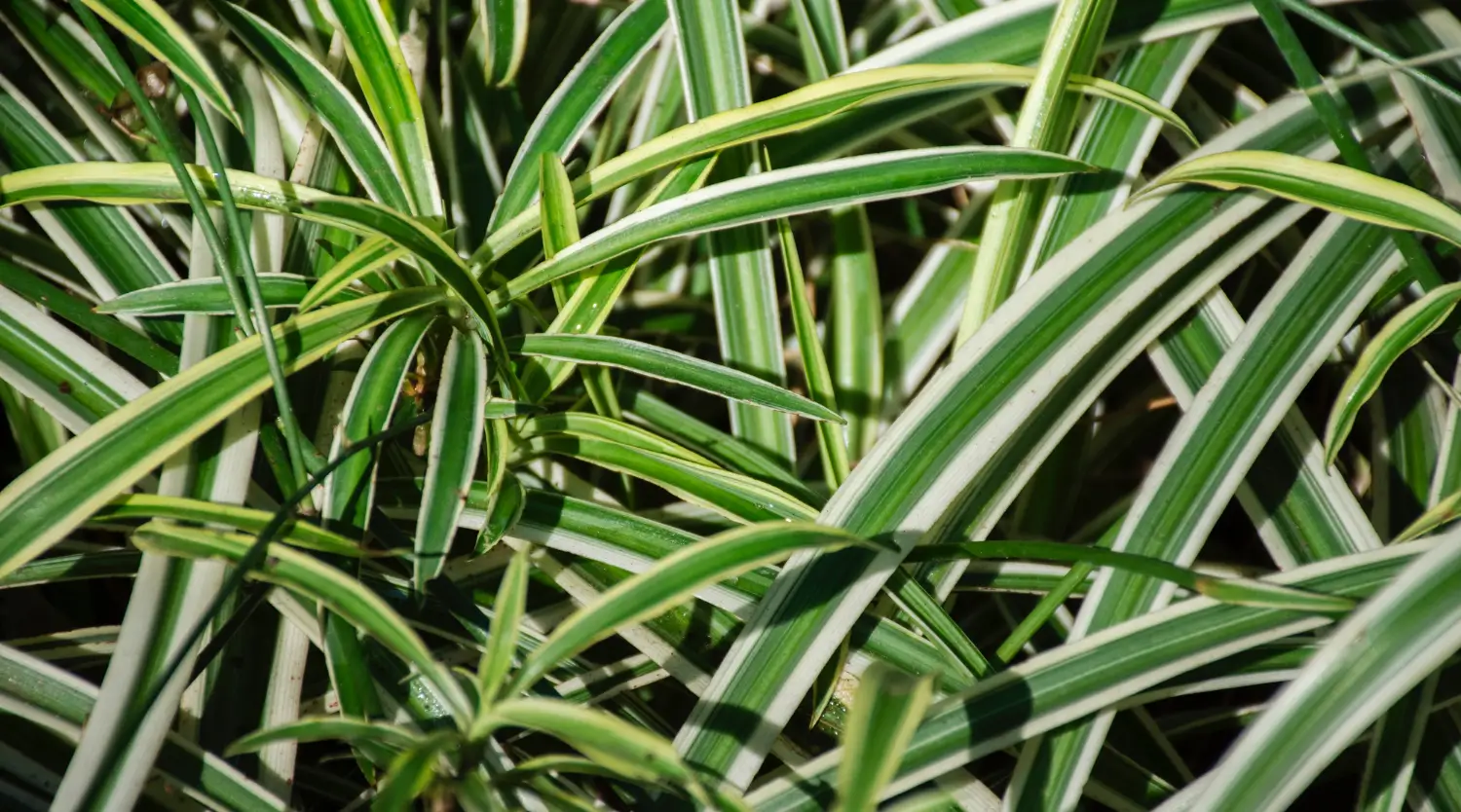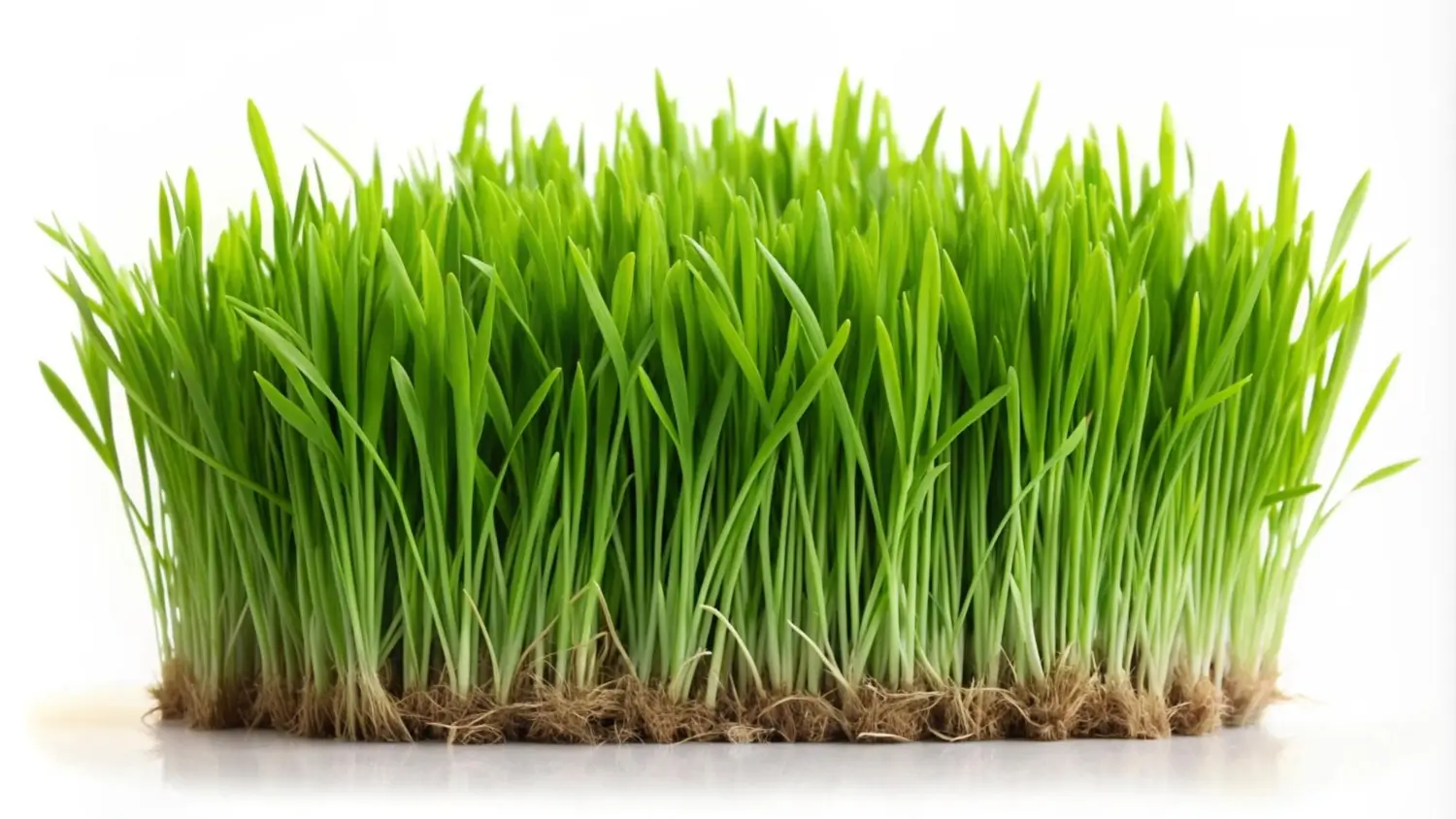
Bahia grass seed: A low-maintenance option for tough soil conditions
Seeding grasses is good for strong lawns. The right grass seed has an impact on the way your lawn looks and how well it withstands challenging soil conditions. Bahia grass seeds are also a good option as they are tolerant of various soil types, which is perfect for a homeowner who is looking for a low-maintenance lawn.
- What: Bahia grass is a warm-season grass that’s both low-maintenance and tolerant of poor soil conditions.
- Growth Style: Spreads by underground rhizomes, forming a thick, durable carpet highly resistant to drought and heat.
- Key Benefits: Excellent for erosion control and ideal for low-maintenance lawns in sandy, acidic soils.
- Ideal For: Areas with poor soil and minimal rainfall. Thrives in full sun—great for pastures and large lawns.
- Maintenance: Requires very little water or fertilizer and needs less frequent mowing than other grasses.
- Considerations: Not suitable for shaded locations and may go dormant in colder weather.
Bahia grass seeds are warm-germination seeds that are able to grow in various climates across the southeast. It is drought-tolerant and will grow in infertile sandy soils and under close grazing. Homeowners or gardeners can grow them on wet and poorly-drained soils in the southern climes and dry and well-drained sandy uplands.
MEET THE EXPERT
- ■ Dr. Cliff Lamb is the interim department head for the new Department of Rangeland, Wildlife and Fisheries Management.
- ■ Dr. Stephen Enloe is a turf and invasive plant specialist at the University of Florida, well-known for his research on tough soil grasses and sustainable land management.
Growcylce offers the top fast-growing grass seeds for a thick, lush, natural, self-healing lawn, including Bahia grass seed. This article will discuss everything you need to know about Bahia grass seed — seeding, care, and climate information for the best outcome.
What is Bahia Grass Seed?
Bahia grass seed is produced in Paspalum notatum, a warm-season grass from South America. It is often used for lawns, pastures, and erosion control in warm climates, particularly in Florida and the lower South.
Bahia grass is well adapted to sandy, infertile soils and can withstand long periods of dry weather, flooding, and heavy grazing. Bahia grass seed is planted to produce this hardy warm-season grass, which grows particularly well in the Southern climate, where it does well in sunny and high-traffic areas, and it is good to grow with little maintenance. The thick, compact growth of this plant also serves to stabilize soil and give good ground cover.
Characteristics of Bahia Grass Seed
- Hardy and drought-tolerant: thrives in dry climates
- Adapted to sandy, low-fertility soils: grows where many other grasses can’t
- Rapid spreading: robust underground rhizomes form large stands
- Flood and grazing resistant: ideal for pastures and feed
- Natural pest and disease resistance: low maintenance
- Optimal soil pH: prefers around 5.5, tolerates 4.5 to 6.5
- Seed head: purple with two spikes that produce pollen
- Growth season: warm months (April to September), reaching 12–25 inches tall
Pros and Cons of Bahia Grass Seeds
Bahiagrass is a good choice for hot and dry conditions because it can handle heat and drought. It has both benefits and drawbacks. Here are some of them:
| Pros | Cons |
|---|---|
| Can tolerate drought well and survive with very little water. | Creates a less dense lawn due to its gritty texture and open growth habit. |
| Requires less fertilizer and mowing than many other lawn grasses. | Can go dormant and turn brown in colder climates. |
| Thrives in hot climates and can withstand high temperatures and full sunlight. | May take longer to grow and establish compared to other grasses. |
| Resistant to many diseases and pests, reducing the need for pesticides. | |
| Helps prevent soil erosion with its deep and thick roots. |
Types of Bahia Grass Seeds
Bahia grass seeds come in a few varieties, each suited to slightly different purposes. The main varieties include:
1. Common Bahia Grass
Common Bahia grass was introduced first in Florida in 1913. It also has short, wide leaves and thick, spreading, underground stems, so-called stolons. It grows more slowly and is less productive than newer varieties, and it is not as cold-hardy.
Homeowners may still locate Common Bahia grass as it still exists in some old pastures, but it is not as commonly cultivated and is not generally recommended as lawn grass.
2. Argentine Bahia Grass
Argentine Bahia grass has a thick, dark green sod that performs well for lawns in many applications. Its leaf blades are broader than those of Pensacola Bahia grass. Argentine grass is difficult to kill, immune to many pests and diseases, and will tolerate freezing temperatures.
It stands erect, but seed heads are not quite as tall nor as dense as Pensacola grass. Argentine grass is a purely apomictic (apomixis) grass, and each seed genetically represents the parent plant.
Plants make dependable turfgrass covers and, thus, are widely used as lawn grasses. Their growing season is shorter than that of Pensacola. But when cooler temperatures come, Argentines lose their tan quickly.
3. Pensacola Bahia Grass
Pensacola bahia grass is one of the most common bahiagrasses used for pasture. It was chosen in Pensacola, Florida, in 1935. This grass has a very deep root system, enabling it to withstand long periods of stress. It is perfectly at home in hot and cold climates. ‘Pensacola‘ produces more seed heads than ‘Argentine’ bahiagrass, and so it is not as good for lawns but is acceptable along roadsides.
Pensacola Bahia grass has narrower and longer leaf blades than Argentine. It is also more color-retentive and stays green during the coldest winter months better than other bahiagrasses. Seeds of Pensacola are "family" seeds; they are never identical but related, as they are produced sexually. This may cause slight variations in appearance between seedlings, making for a less regular stand than Argentine.
4. Paraguay Bahia Grass
Paraguay Bahia grass is named after where it presumably originated. It is a low-growing, rough grass, with slender leaves, and not as much grass is produced as is from the Pensacola variety.
It can be used by gardeners as a general-purpose grass now, but the seeds are no longer on sale. It's the same kind of grass they have in Argentina, only it is a little larger and more prolific. But like Pensacola, it does not like the cold.
5. UF-Raita Bahia Grass
UF-Riata Bahia grass springs out early in the spring, and clings on later in the fall, as it's more cold-tolerant for a Florida grass. It may be marginally more disease-resistant than other grasses, and during much of the year in central and southern Florida, it stays green. In trials, it stayed green several days longer than other varieties. Nevertheless, UF-Riata has been relatively less investigated in the northern parts of Georgia.
6. AU Sand Mountain Bahia Grass
AU Sand Mountain Bahia grass is the most cold-tolerant tested in Georgia. It performed well in yield trials at the Northwest Georgia Research and Education Center near Calhoun. AU Sand Mountain produces feed from Pensacola to Argentina when planted in the southern regions.
Factors to Consider While Selecting Bahia Grass Seed
Homeowners should consider several important factors when choosing the best Bahia grass seed. Here are some key points to consider before making a selection.
Climate or Weather Conditions
Bahia grass is tolerant of high temperatures and sunlight, so it grows well in hot, sunny southern states. It does best in sub-tropical and tropical climates and is tolerant of moist conditions, especially close to the coast, and is highly drought resistant, making it ideal for locations that happen to have erratic rainfall.
Bahia grass can withstand heat, but some varieties grow better in cooler conditions. Argentine Bahia, for instance, does not thrive in cold climates, especially not in winter. Hence, selecting the appropriate Bahia grass according to the climate is a must.
Type of Soil
Bahia grass grows best in sandy, pH 5·5 – 6 ·5, low fertility soils. Oh, and it also takes in nutrients and water from even the toughest of soils, thanks to its deep roots. It is successful in sandy soil but may not be as full in rich, compacted, or clay soils.
Before you pick seeds from Bahia, identify the soil type and also add nutrients to the lawn to ensure a strong root structure and better coverage in such soil types.
Sunlight Requirements
Bahia grass requires 6 to 8 hours of sunlight per day for optimum growth. It does not like a lot of shade, so it is not happy in a shady garden. Bahia grass may struggle to cover lawns that have many trees or spots that are shaded. While it can grow more in some conditions, it’s best to plant Bahia grass in full sun (or the brightest areas) in partially shaded lawns for the healthiest lawn. Also, bear in mind that there are grass types that do better in the shade if there is heavy shade.
Top Bahia Grass Seed for Resilient Lawn
Selecting the highest quality Bahia grass seed is the key to a sturdy lawn. Below are the highest-rated Bahia grass seeds that can be found on Growcycle:
Pennington Pensacola Bahiagrass Pencoted
Pennington Pensacola Bahia grass is a low-maintenance and drought-resistant grass that makes it the perfect choice for sunny conditions with plenty of heat and salt tolerance. Tolerant to both hot and cold temperatures, it is perfect for those areas where homeowners would like to institute a low-maintenance, heat-resistant, and no-irrigation-required lawn!
Also known as sun-ray grass, this grass type needs a minimum of eight hours of sun exposure a day, making it an ideal choice for sunny lawns and open spaces. Strong roots allow it to endure drought, so it is appropriate for areas with erratic rainfall.
Pensacola Bahia grass stays green and grows well, even in hot and dry conditions. What else?
- It can tolerate milder winter temperatures, too, which helps keep the grass healthy all year round.
- It can also thrive in poor soil conditions.
- It grows well even in sandy, acidic, or low-fertility soils, making it a good choice for less-than-perfect lawns.
- Its strong roots help improve soil structure, prevent erosion, and provide a stable, long-lasting lawn.
Pensacola Bahia grass grows quickly and needs little maintenance, which helps keep the lawn looking good all year. Thus, it is an excellent choice for homeowners who want to improve the soil quality and create a low-maintenance lawn that can resist tough conditions.
Best Practices to Plant Bahia Grass Seeds
It’s good for homeowners who want a lush, green lawn in hot weather. Here are some simple ways to plant it in the yard.
1. Lawn Preparation
Bahia grass requires ground preparation to flourish. Begin by clearing away weeds, debris, and other grasses to eliminate competition for nutrients and water. To make roots grow better, aerate the lawn before planting. Bahia grass is most successful in soil that is well aerated, so use a tiller or garden rake to break up the soil and leave it flat and smooth.
pH Test the soil because it prefers a slightly acidic soil to neutral soil. If it’s too high, lower the pH by incorporating sulfur or lime.
2. Right Timing
The key to successful Bahia grass seeding is in the timing. The best time to plant Bahia grass is in the early spring for highland soil, or late spring for low, moist soils. Weeds can be an issue, but a later summer planting can still perform well. But, bahiagrass growth will be dramatically reduced by a lack of moisture. Early autumn is also a good time to plant bahiagrass in south Georgia.
3. Seed Size and Dormancy
Bahia grass seed is very small and should be planted slightly under the soil, no deeper than 1/4 to 1/2 inch. This enables them to grow faster and stronger. The seeds sprout at different intervals. Some seeds germinate quickly; others take until next year. Typically, 50-60% of seeds will germinate in 30 days.
Bahia grass seeds have this hard seed coat, and they become dormant, refusing to sprout immediately. When sowing this seed, be patient because this dormancy may last for several months before germination. Scarified seeds can also help with germination rates because they are specifically treated to break dormancy and help seedlings emerge more quickly. Bahia grass, even with Scarified seeds, can take several weeks to germinate completely.
4. Planting Methods
Gardeners can sow Bahia grass seeds in an efficient manner through methods like hydroseeding and broadcasting.
- Broadcasting means spreading the seeds evenly over the prepared soil and lightly raking to ensure the seeds touch the soil well. Homeowners can use Nufarm Broadstar for broadcasting.
- Hydroseeding combines seeds, water, and mulch, and is especially helpful on large areas or slopes that may be prone to erosion. Once you’ve seeded, water the section properly to help the seeds settle and sprout.
5. Rate of Seeding
The seeding rate varies with the seed and the method of planting. When planting Pensacola or a similar type, plant 12-15 pounds of seed per acre in a prepared seedbed. Oversowing can cause overcrowding, and undersowing can cause patchy growth. Be sure the seeds are well-distributed to prevent resting spots and to even out the seeds.
6. Fertilization
Fertilizing Bahia grass aids farmers in developing and sustaining good-looking lawns. For helping roots to grow, apply high phosphorus fertilizer, like the FERTI MAXX Phosphorus Free Blend. Change to a balanced nitrogen fertilizer to encourage good growth once the grass is established. Be careful not to over-fertilize, as over-nutrition can cause the grass to grow at a rapid pace, which weakens it and ends up taking even more of your time and money in the long run.
Steps to Maintain Bahia Grass Lawn
On top of that, keeping Bahia Grass will mean a healthy, green, and full lawn the entire growing season. Here are some tips for maintaining them.
1. Regular Mowing
Regular mowing encourages grass to grow and contributes to the neat and healthy appearance of a lawn. Bahia grass should be cut by farmers at a 3- to 4-inch height to encourage deep rooting. Never mow more than 1/3 of the leaf blade at one time. Too much cutting stresses the grass and makes it less resistant.
2. Watering
Bahia grass is capable of surviving dry spells, but if you want to keep it healthy and green, you’ll have to be sure to water it frequently, particularly during dry spells. Water the lawn once or twice a week, keeping the soil wet to a depth of 6 to 8 inches. Best to water in the early morning. This helps the grass dry during the day and cuts down on the risk of disease.
3. Overseeding
Gardeners or homeowners may need to overseed their lawn to keep it thick and colorful. Bahia grass can become sparse due to foot traffic, pests, and weather over time. Overseeding is the process of sowing new seed on top of existing grass to fill in bare or thinning patches. When to overseed. The best time to overseed a lawn is in late spring when temperatures are warm and the lawn can recover easily.
4. Dethatching
Thatch is dead grass, roots, and organic matter that can accumulate on the surface of the soil. An excess of thatch makes it impossible for air, nutrients, and water to reach the roots.
Dethatching can clear away this layer and benefit the overall condition of the turf. Bahia grass can be dethatched by hand using a rake or by using a machine by the farmer or homeowner.
5. Aerating
Aerating is also a major factor in the upkeep of a Bahia grass lawn. It minimizes soil compaction and promotes root growth. Aeration puts tiny holes in the lawn, making it easier for water, nutrients, and air to reach the grass. This is particularly beneficial for high-traffic lawns or lawns with dense, clay soils. You are best to aerate the grass in late spring or early summer so it has time to recover and grow well.
Pests and Disease Control for Bahia Grass Lawn
Bahia grass is prone to infection by a variety of diseases and pests. Here are a few things to do to manage pests on the Bahia grass lawn:
Weed Management
Cultural practices are the best way to control weeds. Farmers can easily manage broadleaf weeds in Bahia grass using herbicides like Atrazine St. Augustine Weed Killer.
Insects Management
Some insects, such as spittlebugs, mole crickets, armyworms, and white grubs, can harm Bahia grass. Farmers and homeowners can use biological or chemical insecticides, like LESCO Horticulture Oil insecticide, to control these insects.
Diseases Management
Diseases that may become serious problems occasionally include those that affect bahiagrass. Problems with leaf spot, blights, and root diseases are common. Nevertheless, most pests do not represent problems in well-managed bahiagrass stands.
FAQs
Can you grow Bahia grass from seed?
Yes, Bahia grass can be grown from seed. It thrives in warm regions and is drought tolerant. For best results, sow seeds in late spring or early summer into well-prepared soil, and keep the soil moist until the grass begins to sprout.
Where does Bahia grass grow best?
Bahia grass prefers loose, sandy, well-drained soils in warm climates. It flourishes in southeastern U.S. states like Florida, Georgia, and along the Gulf Coast. It grows best in full sun, with light rainfall and can tolerate poor soil fertility.
Is Bahia grass the same as Bermuda grass?
While both Bahia and Bermuda grasses are warm-season grasses, they differ in appearance and maintenance. Bermuda grass is a darker green with rapid growth, whereas Bahia grass is lighter green, low maintenance, and better suited to handle foot traffic.

Choosing the best grass seed for a beautiful, resilient lawn
The right grass seed not only impacts a lawn's appearance but also determines its resilience to weather changes, soil types, foot traffic, long term health, durability, and pests. Proper selection and planting of grass seeds offer numerous benefits.
LEARN MORE →The Bottom Line
For those with difficult soil, bahia grass seeds are extremely helpful to gardeners and homeowners. This grass is well-suited for warm temperatures and is great to use during the summer. If cared for properly, regular maintenance can help maintain a good look for the lawn. Bahia grass is hardy and grows well in sandy, poor-quality soils. It is also tolerant to heat and drought, and low-maintenance, which means that it is suitable for long-lasting lawns.
Growcycle provides high-quality Bahia grass seeds to create vibrant and robust lawns. Gardeners can buy these seeds from this marketplace to achieve the desired lawn.
Disclaimer: This material is for informational purposes only and should not be relied on for legal, medical, financial, or any other form of professional advice.

